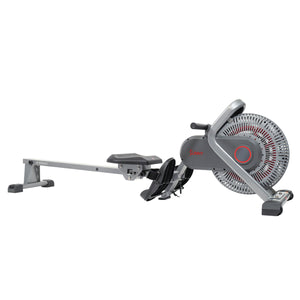We all know eating a healthy diet is important. Filling your diet with fresh, nutritious, whole foods can fuel your workouts and your life to help you bring your best foot forward every day.
However, the expensive bill that comes with eating healthy is one of the biggest barriers and excuses people use to put off eating healthier. The truth is, it is possible to save money while eating healthy!
After years of eating healthy - most of which were on a tight college budget or first ‘real job’ salary simply trying to make ends meet - I have a few tricks up my sleeve. In this article, I’ll share my top tips for eating healthy on a budget.
Tips for Eating Healthy on a Budget
1. Cook at Home
Cook at home - this is the simplest tip for both eating healthy and saving money that you’ll hear everywhere. You can make meals that taste just as good or even better at home for a fraction of the cost you’ll spend out and about.
Plus, when cooking at home, you have full control over the ingredients included in your meal. Whereas, when eating out, many restaurants and fast-food spots often include sneaky added ingredients, preservatives, salt, and sugar that make the food taste good, but can add calories and make your meal less healthy than if you simply cooked it at home.
2. Plan Your Meals & Stick to Your Grocery List
As someone who doesn’t have a lot of time, planning meals in advance can seem like a lot. However, over the years I’ve learned that planning saves time.
By having a plan for each meal you’re going to eat throughout the week, you don’t waste time thinking about what you’re going to eat, or worse, going to the store every day.
With proper planning, you can hit the store once a week and go to the store knowing exactly what you need so you don’t waste money on extra snacks or food you won’t need for the week that just goes to waste.
3. Cook Large Portions & Save Your Leftovers
Cooking in large portions can save you time in the future by having leftovers already prepared to eat for breakfast, lunch, or dinner later. Or freeze additional portions for a delicious meal with minimal effort in weeks to come.
Making use of leftovers not only saves you money on future meals but it cuts down on waste too. Consider trying some of our favorite meal prep tips and recipes that save well in the fridge or freezer!
4. Opt for Meal Prep Over Convenience or Pre-Prepared Foods
While pre-prepared foods like pre-chopped vegetables, seasoned meats, pre-packaged meals, snacks, and even convenience items like 1-minute rice or pasta look so tempting and easy, they’re a lot more expensive than preparing them yourself.
You can save money by choosing foods that have a longer cooking time, such as whole fruit and uncooked rice. While doing so may take a little more time and effort, you can significantly reduce the cost of your meals. Bonus, in many cases you’ll also reduce the number of preservatives added to convenience shelf foods to make them taste better and last longer but add calories and make them less healthy.
5. If Buying Fresh, Choose to Produce That’s In-Season
Produce that is not in season is generally transported from far away to get to your local grocery store, which is not good for the environment or your budget.
Often the further produce is transported the less nutritional value it has as it is picked before it’s ripe and then goes through an extensive process during transportation to make sure it’s still good by the time it reaches you.
Local produce that’s in season is generally a lot easier to come by, cheaper, and at its peak in flavor and nutritional value. Also, consider buying it in bulk, when possible, bags of apples or citrus often come at a discounted price.
6. Shop the Inner Aisles at the Grocery Store
We hear time and time again that to eat healthy ‘shop the outer rim of the grocery store’. There’s some truth to this as this is usually where fresh whole foods are kept like the produce, dairy, and meat.
The truth is on the inner rim of the grocery store there are plenty of healthy options you won’t want to miss out on. Pantry and freezer items with a long shelf life can cut costs and increase convenience when cooking healthy at home.
For example, cans of beans or fire-roasted tomatoes are great for adding to soups or chili. And frozen fruit is amazing for freshly blended smoothies - even better it’s picked at peak ripeness if your favorite fruit is out of season.
7. Look Out for Sales
Well, this one might seem obvious, but so often we miss what’s right in front of us when we’re in a rush. If you’re able, check your local paper or online to see what the deals are at your local grocery stores, you’ll be able to easily work what’s on sale into your weekly cooking plan.
For example, if chicken breast is on sale, pick some up and add it to your weekly menu. Or buy a few packs and freeze one for future use. Plus, pantry items that you use time and time again like rice, beans, nuts, and seeds? You’ll always use them so why not buy them on sale?
8. Reach for Store-Brand When Possible
It’s easy to get stuck on name-brand items, but store-brand items are often made by the same manufacturer, and they’re the same product at a fraction of the cost. Next time you reach for your favorite brand items, look for a store brand option and compare prices.
In some cases, going to a name brand might be worth the extra money based on ingredients, ethical practices, or availability of the product in other brands, but it’s worth looking to see if you can find the same options for a lot less.
9. Get Fresh Foods for Cheap from the Bulk Bins
The bulk bins are a great way to shop for fresh grains, rice, beans, nuts, or seeds. Because these items reduce the cost to the seller by reducing packaging and allowing them to sell the items in bulk, they can sell these items to you at a lower cost.
Plus, from the bulk bins, you’re able to buy exactly how much you need at a lower price than brand-name goods, which means you can save money while reducing waste.
10. Shop Multiple Stores to Get the Best Deals
I used to get a lot of groans from my husband when I made us stop at two different stores for groceries, but over the years he’s learned just like me that at certain stores you can get better deals.
Currently, we stop at Trader Joe’s for their meat, where it’s possible to get high-quality organic cuts for a fraction of the cost of Whole Foods. But we stop at Whole Foods for a lot of produce because their 365 brand runs cheaper and is fresher than the produce at Trader Joe’s. While going to two stores can be a pain, I usually order my Whole Foods groceries online for pick up, which is a free service they offer in our area that saves me a lot of time.
Depending on where you live, the stores that are available to you and options might be different from mine. Regardless, keep your eye out for the best deals at different stores in your area, and you might find, like me, that you can save a significant amount of money by shopping at multiple stores.
11. Substitute Recipe Ingredients When You Can
When trying out new recipes it’s not uncommon to run into healthy recipes that sound amazing but may have a ton of spices or ingredients you’ve never tried before. That really can add up.
It’s okay to substitute ingredients, for example swapping out green beans for broccoli or asparagus depending on what’s in season or using white beans instead of black beans in your salad or soup. There are always easy swaps that can be made to save a little money along the way. Make use of what’s in season or what’s already in your cabinet without sacrificing flavor.
12. Replace Meat with Protein Alternatives
Eating less meat can be a good way to save money. Try incorporating a few meals into the week or one meal out of the day where you focus on getting protein from plant-based sources like legumes, hemp seeds, eggs, yogurt, or even protein powder.
These are all inexpensive, nutritious items that are easy to prepare. Most of them have a long shelf life too so they’re easy to have on hand and incorporate into your diet.
Closing Thoughts
Eating healthy doesn’t have to break the bank. Put some of the strategies above into practice to reduce the cost of your groceries and stay on track with your goals.























Add Your Name & Email
Please enter your name and email to continue.We won’t display your email publicly.